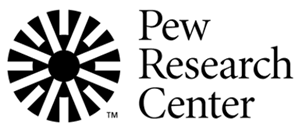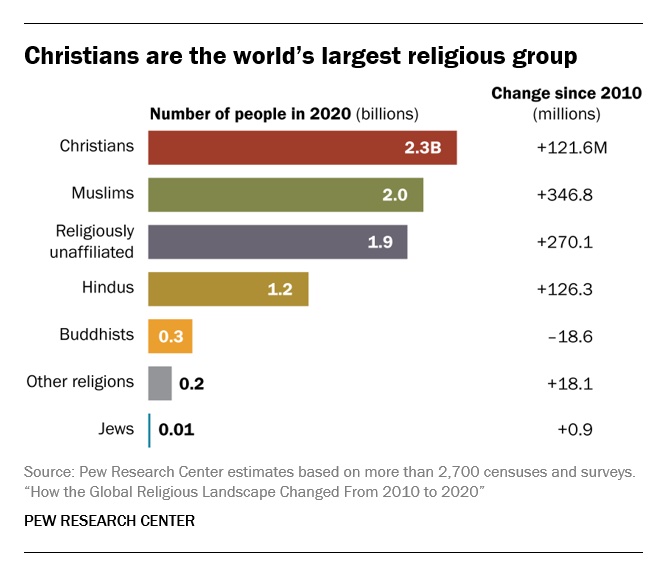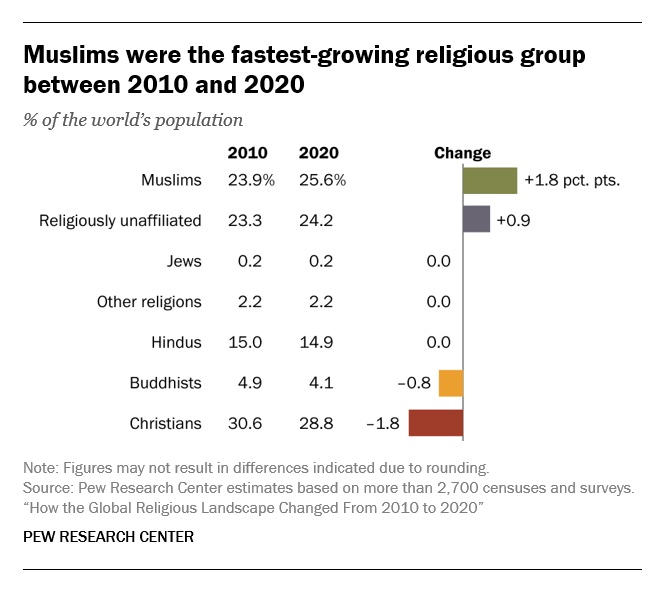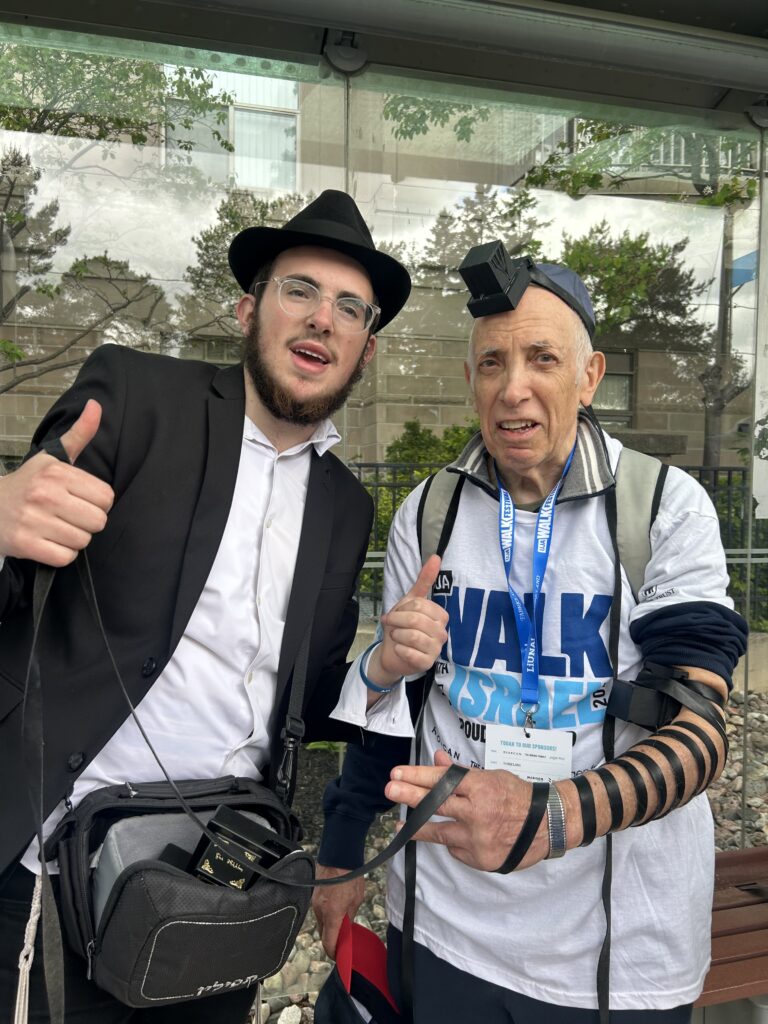Uncategorized
10 treasures from the New York Public Library’s 125-year-old Jewish collection
(New York Jewish Week) – In the heart of Manhattan, you can page through the Passover story in an Italian haggadah from half a century ago, check out the posters for the most popular Yiddish plays of the 1920s and examine dried flower arrangements from the Holy Land made at the end of the 19th century.
Opened just two years after the New York Public Library itself, the Dorot Jewish Division of the New York Public Library is celebrating its 125th anniversary this year.
Today the collection, housed in the library’s main building on Fifth Ave., boasts over 250,000 materials from all over the world, with the earliest ones dating back to the 13th century.
“People don’t realize the amount of depth we have in this collection chronologically and geographically and it is still growing,” said Lyudmila Sholokhova, the curator of the collection. “I think we have been too modest about what we have here — this library is for everybody and the community needs to know that.”
To celebrate its 125th birthday and spread the word, the Dorot Jewish Division is putting some of its favorite materials on display for an event with librarians, scholars and writers from around the country to discuss the history of Dorot, and its future, on Wednesday, Dec. 14. The event is in person and online.
That history dates to November 1897, when banker and philanthropist Jacob Schiff donated $10,000 to the New York Public Library for the purchase of “Semitic literature” and the hiring of a curator of a Jewish division in the library. Schiff ended up donating $115,000 (nearly $4 million today) over the course of his lifetime.
The head librarian position went to bibliographer and historian Abraham Solomon Freidus, who immigrated to New York from Latvia in 1889. Under his watch, the newly established Jewish Division became a prominent research and reference center for Jewish scholars all over the world. A reading room dedicated to the Jewish Division, where scholars have researched everything from a study of Jews and chocolate to a history of Jewish women in theater, has remained in active use at the library since 1911.
Sholokhova came to the NYPL in 2020 after nearly 20 years working as a librarian at the YIVO Institute for Jewish Research. Part of her mission is to showcase the collection to the public and help bring awareness to the library’s extensive resources.
Through most of its history, the Dorot Jewish Division was used as a reference site while scholars worked on encyclopedias and research. Today, the reading room is still open to the public — and there’s alos an extensive digital catalog available on the library’s website. All New Yorkers need to do is request the items they want to see a few days in advance.
Though the division inherited a few small collections and private libraries, many of its items have been purchased or donated over time.
The New York Jewish Week recently stopped by to see what would be on view during the anniversary celebrations. Here are 10 highlights:
1. Historic haggadahs from Venice and Amsterdam
Traditional illustrated haggadahs from Venice (left) and Amsterdam (right). Printed in the 17th century. (Julia Gergely, design by Grace Yagel)
The Dorot Jewish Division boasts an impressive collection of haggadahs, the guides used at Passover seders. The collection includes the Venice Haggadah with Judeo-Italian translation, printed in 1609, and the Amsterdam Haggadah printed in 1695. Both of these volumes are first editions of what became a standard structure for a haggadah — the Venice Haggadah influenced Mediterranean tradition and the Amsterdam Haggadah influenced Central European tradition.
2. The very first Sunday edition of the Forverts
Vol. 1, No. 1. Sunday edition of the Forverts from May 2, 1897. (Julia Gergely, design by Grace Yagel)
Forverts (or “Forward” in English), the Yiddish daily that circulated in New York throughout the 20th century, is not just one of the most significant publications in American Jewish history — at its height it was the highest-circulation daily in New York. The paper began publishing in April 1897 and paper copies from its first few months in circulation are incredibly scarce. Sholokhova believes Dorot’s original copy of its first Sunday Supplement, published May 2, 1897, may be the earliest known copy of the Forverts in existence.
3. The earliest image of the North American continent in a Hebrew book
An image of the globe in Ma’aseh Toviyah, an encyclopedia of science and medicine. (Julia Gergely)
Published in Venice in 1707, “Ma’aseh Toviyah” (Work of Tobias) is an encyclopedia of science and medicine written in Hebrew, with sections on theology, astronomy, medicine and geography. Written by Toviyah Katz (also known as Tobias Cohn), the book contains the earliest known image of the American continent in a Hebrew book.
4. First Hebrew alphabet printed in the United States
The first Hebrew grammar book, printed for a Hebrew course at Harvard College. (Julia Gergely)
Printed around 1735, “A Grammar of the Hebrew Tongue” or “Dikduk leshon l’ivrit” is the first known book in the American colonies to contain the entire Hebrew alphabet and a lesson on Hebrew grammar. Compiled by Judah Monis, a Hebrew teacher at Harvard College, the book was intended for Harvard students who desired to study the Old Testament in its original language. Monis was born Jewish but converted to Christianity.
5. A palmistry guide according to Kabbalah
A kabbalah palmistry book, dated around 1800. (Julia Gergely)
This book details the art of palmistry, or hand-reading, according to the Jewish mystical tradition of kabbalah. “Sefer Hochmat HaYad,” or “Book of the Wisdom of the Hand,” was compiled by Eliyahu Mosheh Galino, who lived in Constantinople (present-day Istanbul) in the early 16th century. The library dates the printing of this copy, notable for illustrations that feature white lines etched into black hands, to sometime around 1800.
6. Farewell banquet invitation for Eliezer Ben-Yehudah, lexicographer of the first Hebrew dictionary
Invitation for a farewell banquet for Eliezer Ben-Yehuda, who compiled the first Hebrew dictionary at the New York Public Library. (Julia Gergely, design by Grace Yagel)
One of the Dorot Jewish Division’s most famous researchers, Eliezer Ben-Yehudah, was an early Zionist who became known as the father of Modern Hebrew. During World War I, Ben-Yehudah came to the New York York Public Library to work on the first modern Hebrew dictionary, which he eventually brought back to Palestine. The archive has kept an invitation for Ben-Yehudah’s farewell dinner on Feb. 26, 1919, which includes all the names of the members of the dinner committee as well as the menu in Hebrew and English.
7. A community ledger from Mariupol, Ukraine
The title page ledger with minutes from a mishnah study class in Mariupol, Ukraine. (Julia Gergely)
A pinkas is a census-like ledger kept by Jewish communities in Eastern Europe, recording births, deaths, financial transactions, events and even criminal cases. This illustrated pinkas comes from a mid-19th century Hasidic community in what is now Mariupol, Ukraine, and details the minutes of a Mishnah study class held over the course of a decade. The first entry is dated 1837 and the last is 1848. The pinkas is dedicated to the Trisk Rabbi, Avrohom ben Mordechai Twersky.
8. An 18th-century Megillat Esther
An illuminated manuscript of Megillat Esther, read on Purim. The illustrations, in folk style, were drawn in the late 18th century. (Julia Gergely)
An illustrated scroll of Megillat Esther, the scroll read on Purim, is believed to be from Eastern Europe from the late 18th century. The scroll is significant because it is an illuminated manuscript, with hand-drawn images from scenes in the Book of Esther surrounding the text.
9. Pressed flowers and photographs from 1890s Palestine
Left: An 1899 photo of Jerusalem by Bruno Kentschel. Right: Flowers from Israel, dried and pressed in the 1890s. (Julia Gergely, design by Grace Yagel)
In the 1890s, as the political Zionist movement was beginning to take shape, small books of pressed flowers that were gathered in the Holy Land appeared in the United States. Dorot’s holding features native flowers pressed into the shape of Jewish symbols, and will be shown next to photographs of the landscape of Jerusalem from the same period, taken by Bruno Kentschel, a German photographer who worked from a small studio in Jerusalem.
10. Advertisements from Jewish businesses in the United States
Advertisements , postcards and trading cards for American Jewish businesses. (Julia Gergely, design by Grace Yagel)
The Dorot Jewish Division also has a vast collection of matchboxes, postcard advertisements and trading cards from Jewish businesses across America. The colorful, illustrated advertisements from the 19th and 20th centuries are very often the only traces of Jewish businesses that still exist, Sholokhova explained.
—
The post 10 treasures from the New York Public Library’s 125-year-old Jewish collection appeared first on Jewish Telegraphic Agency.
Uncategorized
How the Global Religious Landscape Changed from 2010 to 2020

Muslims grew fastest; Christians lagged behind global population increase
• Christians are the world’s largest religious group, at 28.8% of the global population. They are a majority everywhere except the Asia-Pacific and Middle East-North Africa regions. Sub-Saharan Africa has surpassed Europe in having the largest number of Christians. But Christians are shrinking as a share of the global population, as millions of Christians “switch” out of religion to become religiously unaffiliated.

• Muslims are the world’s second-largest religious group (25.6% of the world’s population) and the fastest-growing major religion, largely due to Muslims’ relatively young age structure and high fertility rate. They make up the vast majority of the population in the Middle East-North Africa region. In all other regions, Muslims are a religious minority, including in the Asia-Pacific region (which is home to the greatest number of Muslims).

• The religiously unaffiliated population is the world’s third-largest religious category (24.2% of the global population), after Christians and Muslims. Between 2010 and 2020, religiously unaffiliated people grew more than any group except Muslims, despite their demographic disadvantages of an older age structure and relatively low fertility. The unaffiliated made up a majority of the population in 10 countries and territories in 2020, up from seven a decade earlier.
• Hindus are the fourth-largest religious category (14.9% of the world’s population), after Christians, Muslims and religiously unaffiliated people. Most (99%) live in the Asia-Pacific region; 95% of all Hindus live in India alone. Between 2010 and 2020, Hindus remained a stable share of the world’s population because their fertility resembles the global average, and surveys indicate that switching out of or into Hinduism is rare.
• Buddhists (4.1% of the world’s population) are the only group in this report whose number declined worldwide between 2010 and 2020. This was due both to religious disaffiliation among Buddhists in East Asia and to a relatively low birth rate among Buddhists, who tend to live in countries with older populations. Most of the world’s Buddhists (98%) reside in the Asia-Pacific region, the birthplace of Buddhism.
• Jews, the smallest religious group analyzed separately in this report (0.2% of the world’s population), lagged behind global population growth between 2010 and 2020 – despite having fertility rates on par with the global average – due to their older age structure. Most Jews live either in North America (primarily in the United States) or in the Middle East-North Africa region (almost exclusively in Israel).
These are among the key findings of a Pew Research Center analysis of more than 2,700 censuses and surveys, including census data releases that were delayed due to the coronavirus pandemic. This report is part of the Pew-Templeton Global Religious Futures project, which analyzes global religious change and its impact on societies around the world. Funding for the Global Religious Futures project comes from The Pew Charitable Trusts and the John Templeton Foundation.
Uncategorized
Antisemitism in some unlikely places in America

By HENRY SREBRNIK Antisemitism flourishes in a place where few might expect to confront it – medical schools and among doctors. It affects Jews, I think, more emotionally than Judeophobia in other fields.
Medicine has long been a Jewish profession with a history going back centuries. We all know the jokes about “my son – now also my daughter – the doctor.” Physicians take the Hippocratic Oath to heal the sick, regardless of their ethnicity or religion. When we are ill doctors often become the people who save us from debilitating illness and even death. So this is all the more shocking.
Yes, in earlier periods there were medical schools with quotas and hospitals who refused or limited the number of Jews they allowed to be affiliated with them. It’s why we built Jewish hospitals and practices. And of course, we all shudder at the history of Nazi doctors and euthanasia in Germany and in the concentration camps of Europe. But all this – so we thought – was a thing of a dark past. Yet now it has made a comeback, along with many other horrors we assume might never reappear.
Since the Hamas attack on Israel on October 7, 2023, there has been a resurgence of antisemitism, also noticeable in the world of healthcare. This is not just a Canadian issue. Two articles on the Jewish website Tablet, published Nov. 21, 2023, and May 18, 2025, spoke to this problem in American medicine as well, referencing a study by Ian Kingsbury and Jay P. Greene of Do No Harm, a health care advocacy group, based on data amassed by the organization Stop Antisemitism. They identified a wave of open Jew-hatred by medical professionals, medical schools, and professional associations, often driven by foreign-trained doctors importing the Jew-hatred of their native countries, suggesting “that a field entrusted with healing is becoming a licensed purveyor of hatred.”
Activists from Doctors Against Genocide, American Palestinian Women’s Association, and CODEPINK held a demonstration calling for an immediate cease-fire in Gaza at the Hart Senate Office Building in Washington, D.C., Nov. 16, 2023, almost as soon as the war began. A doctor in Tampa took to social media to post a Palestinian flag with the caption “about time!!!” The medical director of a cancer centre in Dearborn, Michigan, posted on social media: “What a beautiful morning. What a beautiful day.” Even in New York, a physician commented on Instagram that “Zionist settlers” got “a taste of their own medicine.” A Boston-based dentist was filmed ripping down posters of Israeli victims and a professor at the University of Pennsylvania Perelman School of Medicine did the same. Almost three-quarters of American medical associations felt the need to speak out on the war in Ukraine but almost three-quarters had nothing to say about the war in Israel.
Antisemitism in academic medical centres is fostering noxious environments which deprive Jewish healthcare professionals of their civil right to work in spaces free from discrimination and hate, according to a study by the Data & Analytics Department of StandWithUs, an international, non-partisan education organization that supports Israel and fights antisemitism.
“Academia today is increasingly cultivating an environment which is hostile to Jews, as well as members of other religious and ethnic groups,” StandWithUs director of data and analytics, and study co-author, Alexandra Fishman, said on May 5 in a press release. “Academic institutions should be upholding the integrity of scholarship, prioritizing civil discourse, rather than allowing bias or personal agendas to guide academic culture.”
The study, “Antisemitism in American Healthcare: The Role of Workplace Environment,” included survey data showing that 62.8 per cent of Jewish healthcare professionals employed by campus-based medical centres reported experiencing antisemitism, a far higher rate than those working in private practice and community hospitals. Fueling the rise in hate, it added, were repeated failures of DEI (diversity, equity, and inclusion) initiatives to educate workers about antisemitism, increasing, the report said, the likelihood of antisemitic activity.
“When administrators and colleagues understand what antisemitism looks like, it clearly correlates with less antisemitism in the workplace,” co-author and Yeshiva University professor Dr. Charles Auerbach reported. “Recognition is a powerful tool — institutions that foster awareness create safer, more inclusive environments for everyone.”
Last December, the Data & Analytics Department also published a study which found that nearly 40 per cent of Jewish American health-care professionals have encountered antisemitism in the workplace, either as witnesses or victims. The study included a survey of 645 Jewish health workers, a substantial number of whom said they were subject to “social and professional isolation.” The problem left more than one quarter of the survey cohort, 26.4 per cent, “feeling unsafe or threatened.”
The official journal of the Alliance for Academic Internal Medicine concurs. According to “The Moral Imperative of Countering Antisemitism in US Medicine – A Way Forward,” by Hedy S. Wald and Steven Roth, published in the October 2024 issue of the American Journal of Medicine, increased antisemitism in the United States has created a hostile learning and practice environment in medical settings. This includes instances of antisemitic behaviour and the use of antisemitic symbols at medical school commencements.
Examples of its impact upon medicine include medical students’ social media postings claiming that Jews wield disproportionate power, antisemitic slogans at the University of California, Los Angeles (UCLA) David Geffen School of Medicine, antisemitic graffiti at the University of California, San Francisco (UCSF) Cancer Centre, Jewish medical students’ exposure to demonization of Israel diatribes and rationalizing terrorism; and faculty, including a professor of medicine at UCSF, posting antisemitic tropes and derogatory comments about Jewish health care professionals. Jewish medical students’ fears of retribution, should they speak out, have been reported. “Our recent unpublished survey of Jewish physicians and trainees demonstrated a twofold increase from 40% to 88% for those who experienced antisemitism prior to vs after October 7,” they stated.
In some schools, Jewish faculty are speaking out. In February, the Jewish Faculty Resilience Group at UCLA accused the institution in an open letter of “ignoring” antisemitism at the School of Medicine, charging that its indifference to the matter “continues to encourage more antisemitism.” It added that discrimination at the medical school has caused demonstrable harm to Jewish students and faculty. Student clubs, it said, are denied recognition for arbitrary reasons; Jewish faculty whose ethnic backgrounds were previously unknown are purged from the payrolls upon being identified as Jews; and anyone who refuses to participate in anti-Zionist events is “intimidated” and pressured.
Given these findings, many American physicians are worried not only as Jewish doctors and professionals, but for Jewish patients who are more than ever concerned with whom they’re meeting. Can we really conceive of a future where you’re not sure if “the doctor will hate you now?”
Henry Srebrnik is a professor of political science at the University of Prince Edward Island.
Uncategorized
The 2025 Toronto Walk (and talk ) for Israel

By GERRY POSNER There are walks and then there are walks. The Toronto UJA Walk for Israel on May 25, 2025 was one of a kind, at least as far as Canada and Jews are concerned. The number of people present was estimated to be 56,000 people or 112,000 total shoes. (How they get to that number is bewildering to me, since there is no one counting). This was 6,000 more than last year. Whether it is true or not, take it from me, it was packed. The synagogues in Canada should be so fortunate to get those numbers in total on High Holidays. The picture here gives you a sense of the size of the crowd.

This was my first walk in Toronto for Israel and I was with my granddaughter, Samantha Pyzer (not to forget her two friends whom she managed to meet at the site, no small feat, even with iPhones as aids). The official proceedings began at 9:00 a.m. and the walk at 10:00 a.m. There was entertainment to begin with, also along the way, and at the finish as well. The finish line this year was the Prosserman Centre or the JCC as it often called. The walk itself was perhaps 4 kilometres – not very long, but the walking was slow, especially at the beginning. There were lots of strollers, even baby carriages, though I did not see any wheelchairs. All ages participated on this walk. I figured, based on what I could see on the faces of people all around me that, although I was not the oldest one on the walk, I bet I made the top 100 – more likely the top 20.
What was a highlight for me was the number of Winnipeggers I met, both past and present. Connecting with them seemed to be much like a fluke. No doubt, I missed la lot of them, but I saw, in no particular order (I could not recall the order if my life depended on it): Alta Sigesmund, (who was, a long time ago, my daughter Amira’s teacher), Marni Samphir, Karla Berbrayer and her husband Dr. Allan Kraut and family. Then, when Samantha and I made it to the end and sat down to eat, I struck up a conversation with a woman unknown to me and as we chatted, she confirmed her former Winnipeg status as a sister-in- law to David Devere, as in Betty Shwemer, the sister of Cecile Devere. I also chanced upon Terri Cherniack, only because I paused for a moment and she spotted me. As we closed in near the finish, I met ( hey were on their way back), Earl and Suzanne Golden and son Matthew, as well as Daniel Glazerman. That stop caused me to lose my granddaughter and her pals. Try finding them amid the noise and size of the crowd – but I pulled it off.

As I was in line to get food, I started chatting with a guy in the vicinity of my age. I dropped the Winnipeg link and the floodgates opened with “ Did I know Jack and Joanie Rusen?” So that was an interesting few minutes. And I was not too terribly surprised to come across some of my Pickleball family. All of these meetings, along with spotting some of my sister’s family and other cousins, were carried on with the sound of the shofar as we moved along the way. In short, this was a happening. Merchants selling a variety of products, many of them Israeli based, were in evidence and, of course, the day could not have ended without the laying of tefillin, aided by Chabad, who have perfected the procedure to take less than a minute. See the photo. Chabad had a willing audience.
Aside from the joy of sharing this experience with my granddaughter, the very presence of all these Jews gathered together for a common reason made this day very special to me. However, there was a downside to the day. The downside was that, as we began to walk back to our car there was no other way I could figure out how to return when the rains came and came. While we walked faster, we were impeded by pouring rain and puddles. But Samantha wanted to persevere, as did I. We made it, but were drenched. My runners are still drying out as I write this two days later.
What with being surrounded by 56,000 people, the noise, the slow walking, and the rain, I can still say the day was a real highlight for me – one of the better moments since our arrival in Toronto in 2012. As well as the photos we took along the way, I have the reminder of the day, courtesy of the UJA, as evidenced from the photo. It was not just the walk, but the talk that accompanied the walk that made it so worthwhile for me. I would do it again, minus the rain.
